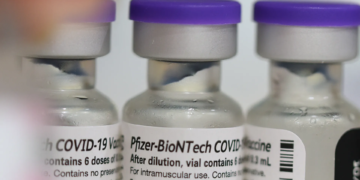Jan. 26, 2022 — For most parents, a child’s nap time is a chance to steal a few moments of rest to recharge for the storm of energy to come. Not for Laura Gould.
In 1997, Gould was a young mother working as a physical therapist when her 15-month-old daughter, Maria, died during a nap. Despite a fever the night before, Maria seemed well that day and was scheduled to visit her pediatrician later in the afternoon. But when Gould went to wake her, she was unresponsive in her crib. There were no signs of distress.
Months of frustration with medical examiners and police investigations left Gould unsatisfied as to the cause, which was ultimately recorded as sudden unexplained death in childhood (SUDC).
“I thought I really missed something, and I thought I blew it as her mom,” she recalled in a recent interview with WebMD. “I couldn’t understand how something could take such a thriving child and not leave any evidence.”
Although scientists believe that at least some cases of SUDC result from heart problems or seizure disorders, an autopsy found that Maria had neither. Gould researched the medical literature and learned that sudden infant death syndrome (SIDS) accounts for approximately 37% of sudden unexplained infant deaths but is never listed as a cause of death for children older than 12 months.
Most of the medical literature involves SIDS, and “there was no champion for the cause” of SUDC, Gould recalled. A meeting with another mom who had lost a child in a similar way prompted the two women to approach the CJ Foundation for SIDS with the idea of supporting others, raising funds, and creating opportunities for SUDC research.
By 2014, Gould was the co-founder of the newly independent SUDC Foundation. The goals of the nonprofit group include supporting research using data from a voluntary registry of parents and children to explore genetic associations with SUDC, as well as providing support for families.
She also now works as a research scientist at the NYU Grossman School of Medicine and its SUDC Registry and Research Collaborative, where her efforts are helping uncover important new findings about the genetics of the tragic condition.
Most cases of SUDC occur in children aged 1 to 4 years, and a lack of standardized investigation systems likely prevents researchers from properly classifying these deaths.
Compared with SIDS, which occurs in approximately 1,400 children in the United States each year, approximately 400 children aged 1 year and older die from SUDC annually. A major obstacle to studying these cases is that “molecular autopsies,” which use genetic analysis in the examination of the death, typically do not assess the parents’ genetic information. As a result, genetic links have been harder to sort out.
That’s changing, thanks in large part to the registry Gould has helped create.
In a study published late last year, Gould and her colleagues found that children who died of SUDC were nearly 10 times as likely to have mutations in genes linked to cardiac and seizure disorders as unrelated, healthy children.
“This study is important because SUDC is a much more pressing medical need than most people realize,” says Richard Tsien, PhD, of New York University Langone Medical Center, who is a co-author of the paper. “The detective work comes up with a consistent story: More than half of the genes that we found are involved in the normal function of the heart and brain.”
In another recent study, of which Gould was not a co-author, researchers at Boston Children’s Hospital found more support for the role of genes in SUDC. They looked at 320 babies who had died of SIDS and 32 cases of SUDC, finding potential genetic links to the conditions in 11% of the deaths.
The researchers also examined DNA samples from 73 families in the group and found that roughly 1 in 8 had lost a child to sudden death in at least three generations. What’s more, according to the researchers, 41% of the families had a history of fever-related seizures.
Gould notes that only 10% of the children in the Boston study had reached their first birthday, a fact that highlights the relative scarcity of research in SUDC, compared with SIDS.
Still, she expressed optimism for the future of SUDC research as the number of families involved and the resulting data grow. Some current research avenues include pathology investigations, examination of proteins in brain tissue, and more genetic studies, she says.
“A large part of our success has come from our ability to recruit families and work collaboratively with medical examiner offices,” Gould says.
Although families may find the SUDC Foundation or the research collaborative at a time of extreme grief and distress, many are willing to join the registry and provide material. Ultimately, getting the word out about SUDC will attract families and researchers to pursue this understudied area, she says.
Overall, about 10% of SUDC cases so far appear to have a compelling genetic explanation, Tsien says. From a clinical standpoint, that information might affect what a doctor or fertility counselor says to parents.
A key takeaway is that most of the genetic mutations are spontaneous and not inherited from the parents, he says. In other words, the new research shows that parents who have an SUDC loss need not be discouraged from having children.
“The more we understand about these disorders, the more information we can offer to families,” Tsien says.
Eventually, clinicians might be able to use genetics to identify signs of when SUDC might be more likely.
“For example, if a child shows a very mild seizure, this would alert them that there might be potential for a more drastic outcome,” Tsien says.
“The sudden death of a child leaves one so overwhelmed and confused,” Gould says. “Grief is also very isolating, especially for such an uncommon tragedy. Connecting with others can help. I would encourage anyone affected by the sudden death of a child — whether explained or not — to reach out to sudc.org for support, connection with others, and information on research.”










:quality(70)/cloudfront-eu-central-1.images.arcpublishing.com/irishtimes/CGYPT6WE7VAO3KJ773SHUVMVBY.jpg?resize=1200,630&ssl=1)



